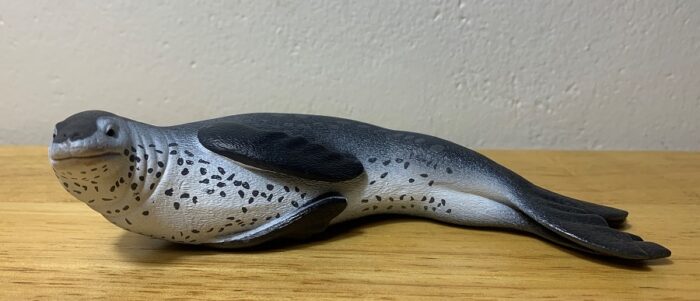The leopard seal (Hydrurga leptonyx) is the antithesis of what we think of when we think of most pinnipeds: seals, sealions, and walruses. The only member of its genus, the leopard seal is about as far from a chubby harbor seal, or playful California sea lion, as you can get.
Author: Gwangi
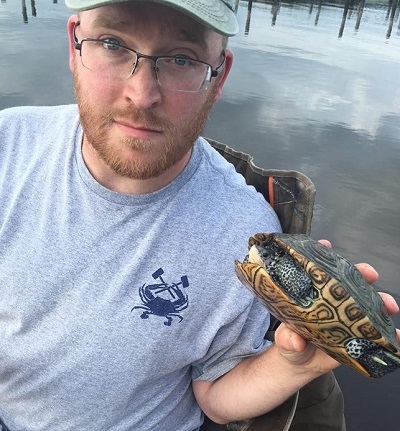 My name is Arthur but I go by Gwangi on the blogs and forums, as homage to the old dinosaur and monster movies I love so much. In addition to writing about and collecting toy animals (extinct and extant) I also share my home with a variety of living animals, mostly reptiles but a little bit of everything. I have a lifelong interest in all things pertaining to nature and natural history and most of my hobbies can be linked to those things in some way. I currently live in Maryland with my wife and daughter. In addition to writing on here I also write magazine articles, typically about local wildlife and aquarium fishes.
My name is Arthur but I go by Gwangi on the blogs and forums, as homage to the old dinosaur and monster movies I love so much. In addition to writing about and collecting toy animals (extinct and extant) I also share my home with a variety of living animals, mostly reptiles but a little bit of everything. I have a lifelong interest in all things pertaining to nature and natural history and most of my hobbies can be linked to those things in some way. I currently live in Maryland with my wife and daughter. In addition to writing on here I also write magazine articles, typically about local wildlife and aquarium fishes.All reviews by this author
Atlantic Goliath Grouper (Incredible Creatures by Safari Ltd.)
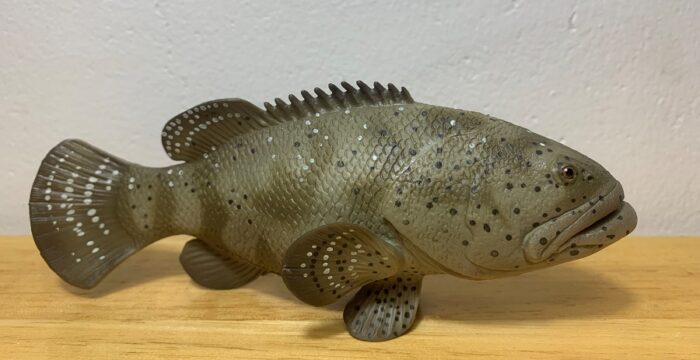
The Atlantic goliath grouper (Epinephelus itajara) is appropriately named, this fish is an absolute brute, a monster, a behemoth. It’s the kind of fish that looks bigger than it rightfully should be. We expect large sizes from sharks, tuna, and billfishes but this fish has a very conventional “fishy” body plan, like you would see in smaller perches, cichlids, or basses, only it is blown up to absurd proportions.
Lemon Shark (Wild Safari Sealife by Safari Ltd.)
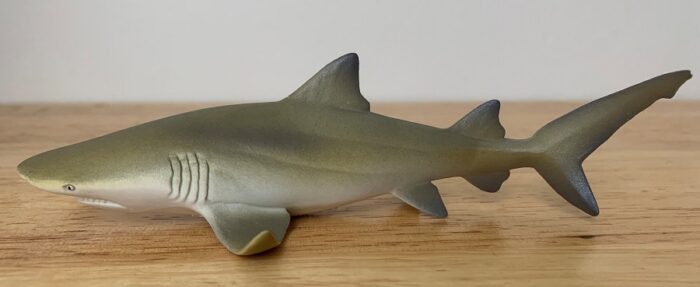
Lemon sharks (Negaprion brevirostris) are a tough, adaptable, nearshore species, found along the eastern coast of the United States, south to southern Brazil as well as the western shore of the Americas from Baja to Ecuador, in addition to the western coast of Africa. Because of their hardiness and accessibility, they’ve been heavily studied by many prominent shark scientists.
Snub-Nosed Monkey (Wild Safari Wildlife by Safari Ltd.)
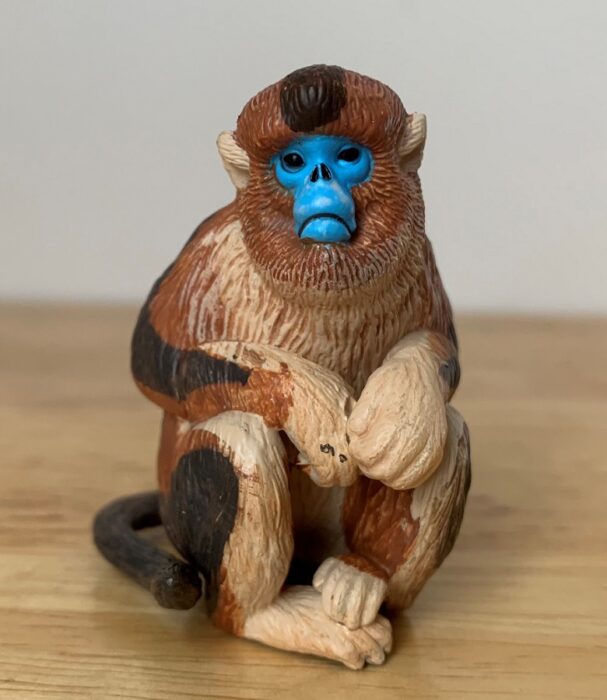
Snub-nosed monkeys are comprised of 5 species that make up the Rhinopithecus genus in the Colobinae subfamily. They live in southern China as well as parts of Myanmar and Vietnam. Snub-nosed monkeys get their name from their flattened noses which are thought to be an adaptation to their cold, high elevation environment.
King Vulture (Wings of the World by Safari Ltd.)
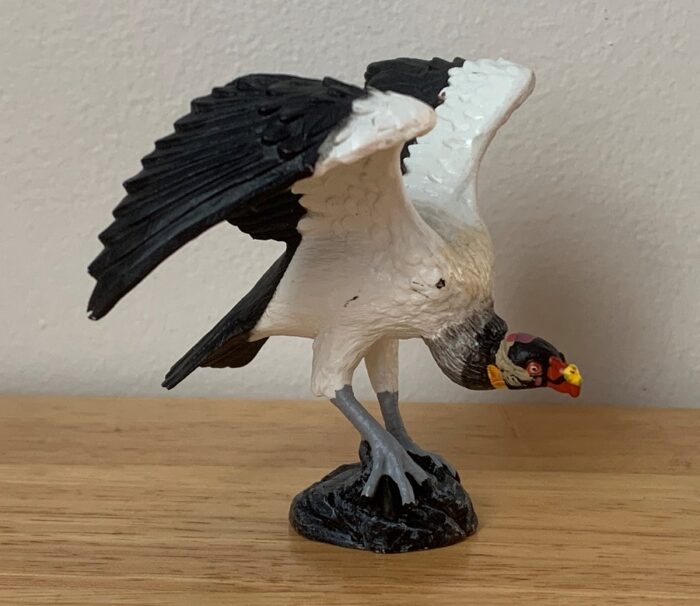
Although they share the vulture moniker the Old World vultures of the Accipitridae family and the New World vultures of the Cathartidae family are not closely related. Their similar appearance and feeding habits are the result of convergent evolution. They are however more closely related than was once assumed. For a time, the New World vultures were thought to be more closely allied to storks than other birds of prey.
Sperm Whale, 2018 (Marine Life by Papo)
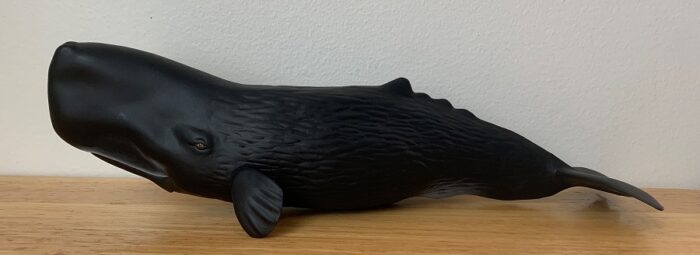
The sperm whale (Physeter macrocephalus) is one of my hands-down favorite animals and yes, I know I’ve said that before about other species, but there’s only three animals tattooed on my arm and one of them is the sperm whale. The other is the giant squid (Architeuthis dux) and as you can expect, they’re locked in combat, a small shark lurks in the background.
Black-Browed Albatross (Marine Life by Papo)
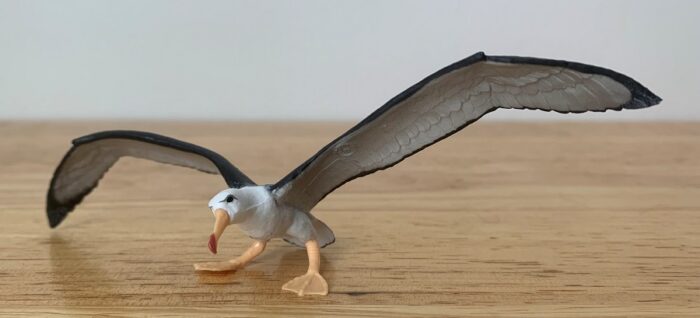
Albatrosses, members of the family Diomedeidae, are some of the most spectacular seabirds, perfectly adapted to a life of sea and air. Albatrosses are some of the largest flying animals alive today, with the wandering albatross (Diomedea exulans) having a wingspan of up to 12.2’ (3.7 meters) and weighing in excess of 20 lbs (9 kg).
Butterflies TOOB (Safari Ltd.)
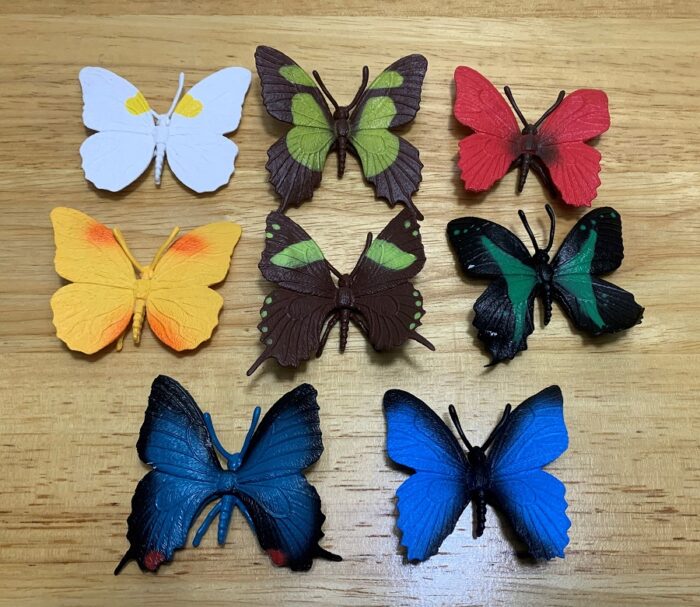
Butterflies are unquestionably the most popular and universally loved insects. You would be hard pressed to find someone that fears or loathes butterflies in the same way a lot of folk’s fear and loathe moths, for example. Even if butterflies are basically glorified, diurnal moths themselves. Butterflies and moths both belong to the order Lepidoptera and although moths first appear in the early Jurassic, 200 million years ago, butterflies don’t show up until the Paleocene, 56 million years ago, having evolved directly from moths.
Llama (Wildlife by Mojö Fun)

The llama (Lama glama) is a domesticated South American member of the Camelidae family and is notable for being one of the only large animals domesticated outside of Eurasia. Alpacas, another domesticated Camelid from South America are similar to llamas but belong to the genus Vicugna along with the wild vicuña (V.
Highland Cattle, Bull (Farm World by Schleich)
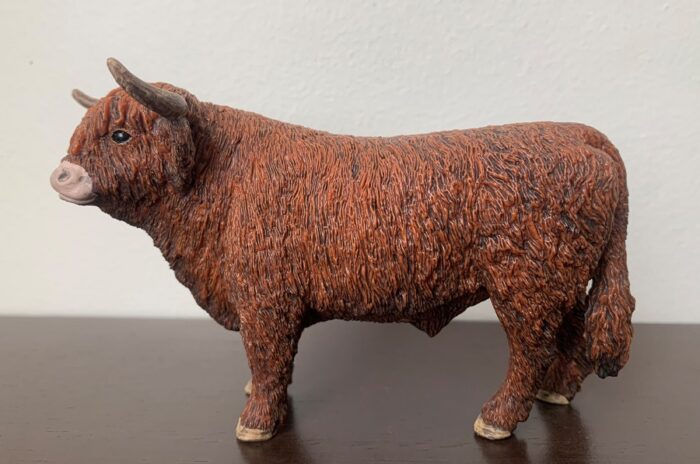
In his review of a Highland cow our own bmathison1972 professed his love for cattle (Bos taurus) breeds, so it only seems appropriate that I do the same in my own review of the Highland breed. I fortuitously came across this Schleich 2020 Highland bull while shopping at a Tractor Supply Company store and fell right in love with it.
Bull Shark (Marine Life by Papo)

Counted among “The Big 3”, the bull shark (Carcharhinus leucas) is considered one of the most dangerous sharks in the world, right alongside the great white and tiger shark. The frequency in which this species encounters humans is due to its preference for habitat that humans also enjoy, shallow warm coastal waters, estuaries, and bays.
American Bullfrog (Wild Republic FrogWatch USA, by K&M International)
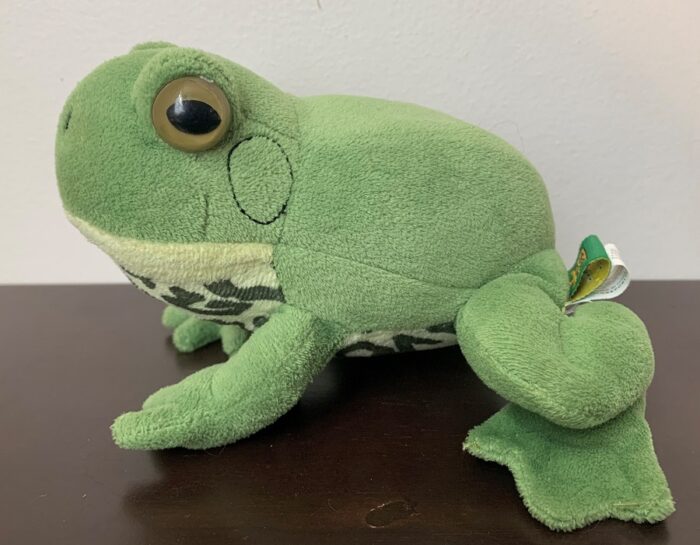
The American bullfrog (Lithobates catesbeianus) is the largest frog species native to North America and a member of the Ranidae, or true frog, family. Bullfrogs are native to most of eastern North America but have been introduced elsewhere in North America and around the world. Bullfrogs are bold and voracious feeders, eating anything that moves in front of them that they can fit in their mouths.

